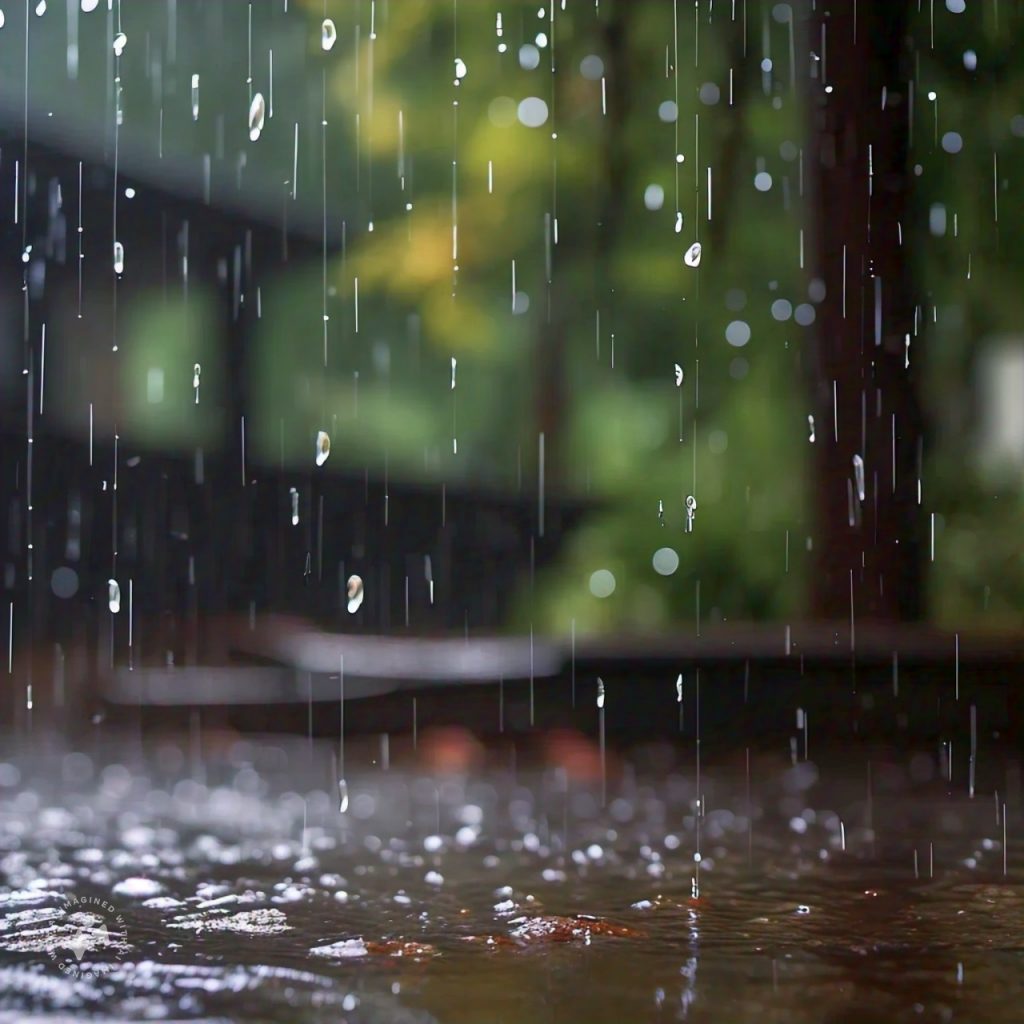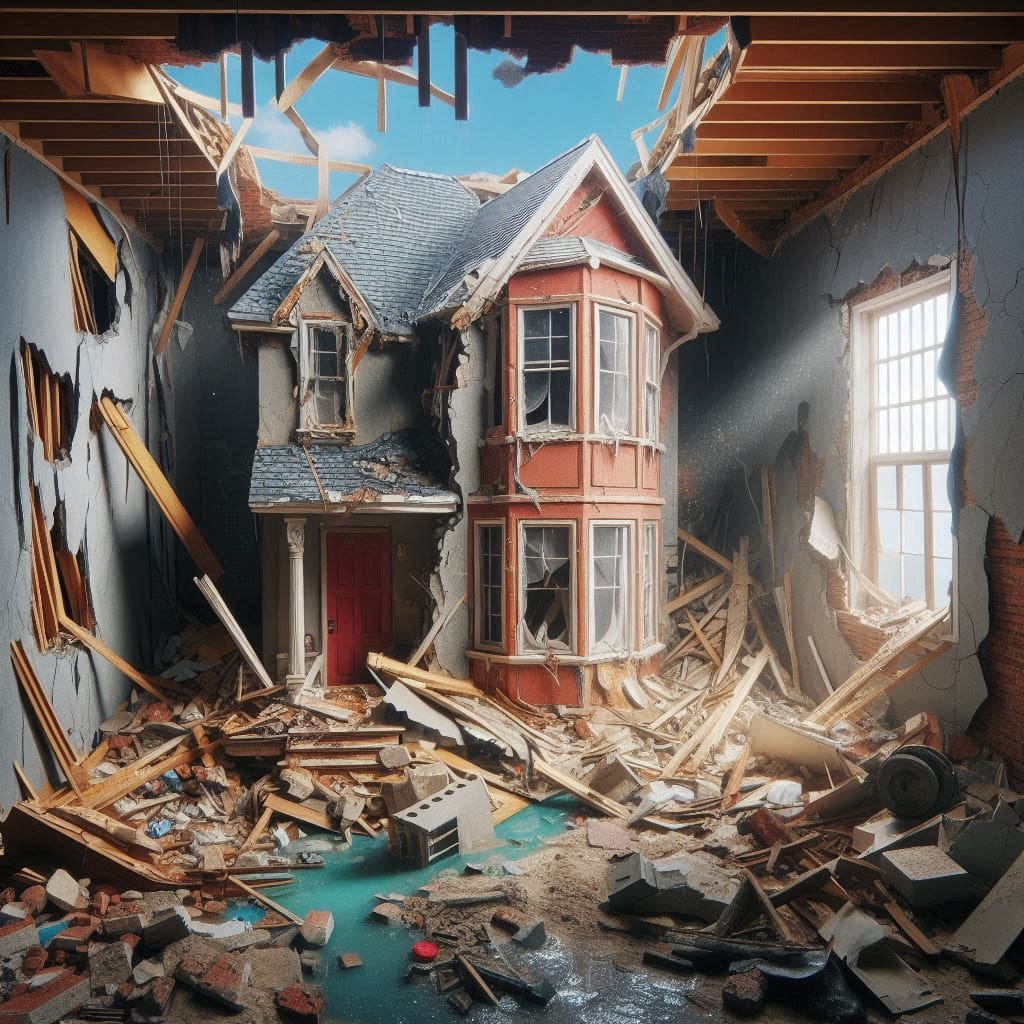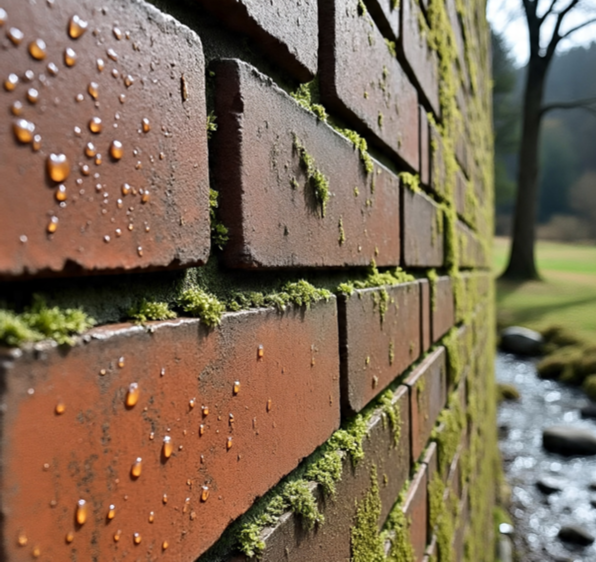Table of Contents
Introduction
Seasonal Rainfall: Rainy seasons can bring more than just scenic thunderstorms—they also increase the risk of water damage inside homes. Leaks, mold growth, and foundation problems can arise from excessive rainfall if preventive measures are not taken. This guide will help you identify common water damage risks and provide actionable solutions to keep your home safe during the rainy season.

Understanding the Impact of Rainfall on Different Parts of Your Home
Different areas of your home are affected by rainwater in unique ways. Knowing these vulnerabilities allows you to create an action plan.
a) Roofing Systems and Chimneys
Roofs are the first line of defense, but they are highly susceptible to water damage over time.
- Common Issues: Missing shingles, damaged flashing around chimneys, clogged gutters.
- Prevention: Schedule yearly roof inspections, repair loose shingles immediately, and install gutter guards to avoid blockages.
b) Foundations and Crawl Spaces
Excess water pooling around your home’s foundation can result in cracks and even flooding in crawl spaces.
- Common Issues: Erosion of soil around the foundation, seepage through foundation cracks, or waterlogged crawl spaces.
- Prevention: Ensure proper grading around your home, and use a French drain or sump pump to divert water away from the foundation.
c) Attics and Insulation
Unnoticed leaks can saturate insulation and foster mold growth, especially during extended rainy seasons.
- Prevention: Check attic vents and ensure they are not blocked, as poor ventilation can trap moisture. Use waterproof insulation materials like spray foam to further protect against moisture.
Common Signs of Water Damage to Watch For
Water damage often develops gradually. Detecting early warning signs can help prevent larger problems down the road.
Increased Utility Bills: A sudden spike in energy bills may mean water is leaking into insulation or walls, reducing efficiency.
Peeling Paint or Wallpaper: Indicates water has penetrated walls, causing adhesives to break down.
Discolored Ceilings: Yellow or brown stains suggest a roof or plumbing leak.
Warped Flooring: Hardwood or laminate floors that swell or buckle are signs of underlying water issues.
Persistent Musty Odor: A common symptom of mold growing in hidden places like walls, carpets, or HVAC systems.
Identifying Key Areas Prone to Water Damage During Seasonal Rainfall
Rainwater intrusion can affect various parts of a home. Knowing where to look is the first step to protecting your property.
a) Roof Leaks
- Problem: Damaged shingles or clogged gutters can allow rainwater to seep into attics, causing leaks.
- Signs: Water stains on ceilings, peeling paint, or visible mold in the attic.
- Solution: Inspect the roof annually and repair missing or damaged shingles. Clean gutters to ensure water drains properly.
b) Window and Door Frames
- Problem: Poorly sealed windows and doors can allow water to enter and create damp conditions.
- Signs: Moisture buildup, swollen frames, or bubbling paint around windows and doors.
- Solution: Apply weatherstripping and caulking to seal gaps. For older windows, installing storm windows can offer additional protection.
c) Basement Flooding
- Problem: Heavy rains often lead to water seeping into basements through foundation cracks or faulty drainage systems according to restoration rh.
- Signs: Pooled water, moldy odors, or efflorescence (white powder) on basement walls.
- Solution: Use a sump pump to prevent water accumulation. Inspect foundation walls and patch any visible cracks with hydraulic cement.
Mitigating Water Damage Risks During Rainfall
Taking proactive steps before and during the rainy season can significantly reduce the risk of water damage.
a) Ensure Proper Drainage
- Clean gutters and downspouts: Blocked gutters can cause water to overflow and collect near the foundation.
- Install gutter extenders: These direct water further away from the house, preventing foundation erosion.
b) Use Rain Barriers and Seals
- Install window well covers: If you have below-grade windows, covers will keep rainwater from pooling around them.
- Apply water-repellent sealants: Use these on exterior brickwork, wood, or concrete to reduce water absorption.
c) Monitor Indoor Humidity Levels
Rainy weather can lead to elevated indoor humidity, contributing to mold growth.
- Use a dehumidifier: This helps maintain optimal humidity levels (between 30-50%).
- Ventilate damp areas: Bathrooms, kitchens, and laundry rooms need proper ventilation to prevent moisture buildup.
Essential Tools and Products for DIY Rainwater Damage Prevention
Investing in the right tools and products ensures your home stays protected from rain-related risks.
Dehumidifiers: Helps maintain ideal indoor humidity, reducing the risk of mold.
Water Leak Detectors: Devices that alert you when water is detected in basements or near plumbing.
Silicone Sealants: Long-lasting sealants for outdoor cracks or gaps.
Sump Pumps: Crucial for areas prone to basement flooding, especially during stormy weather.
Dealing with Water Damage When Rainfall Happens: Immediate Action Plan
If water does enter your home, acting quickly is crucial to minimize the damage.
a) Stop Water Flow
- Turn off utilities: In severe cases, shut off electricity and water to prevent hazards like electrocution or further flooding.
b) Remove Excess Water
- Use a wet/dry vacuum or mop: Quickly remove standing water to avoid structural damage.
- Elevate furniture: Place furniture on blocks or move it to dry areas to prevent warping or mold growth.
c) Dry and Disinfect the Area
- Use fans and dehumidifiers: Promote airflow to dry out damp areas.
- Disinfect surfaces: Use a mild bleach solution to kill mold spores and prevent future growth.
Long-Term Rainfall Water Damage Prevention Strategies
In addition to seasonal preparations, adopting long-term solutions will protect your home from future water damage.
a) Landscape Management
- Create a slope away from the house: Ensure the ground slopes away from your foundation to prevent water accumulation.
- Plant water-absorbing vegetation: Native plants and rain gardens can absorb excess water and reduce runoff.
b) Regular Inspections
- Inspect the foundation: Small cracks can widen over time, so regular monitoring is essential.
- Check attic ventilation: A well-ventilated attic prevents condensation that can lead to mold growth.
5. When to Call Professionals For Rainfall Water Damages
Some water damage issues, like extensive basement flooding or black mold, may require professional assistance. Restoration companies such as PuroClean Disaster Restoration specialize in water damage restoration and mold remediation, offering expertise in drying, cleaning, and repairing affected areas. Hiring professionals can ensure a thorough restoration, especially if the damage is extensive or insurance claims are involved.
Conclusion
Preparing your home for rainy seasons involves more than just waiting for the rain to stop. By proactively identifying areas prone to water damage and implementing preventive measures, you can protect your home from leaks, mold, and structural deterioration. Regular maintenance, proper drainage, and quick responses to water intrusion are key to keeping your home safe and dry year-round.
With these DIY tips, you’ll be well-equipped to handle whatever the rainy season brings. But if the water damage goes beyond your capabilities, don’t hesitate to call professionals like PuroClean for expert help. Your home—and peace of mind—deserve it.


 PuroClean Disaster Restoration
PuroClean Disaster Restoration